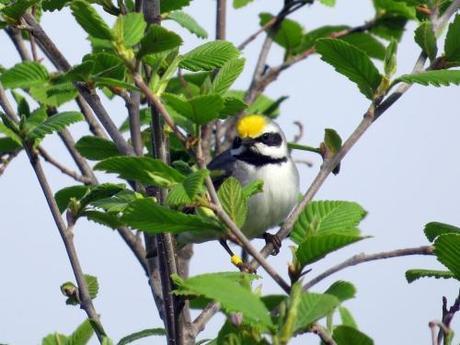Every morning, I put a cup of wild bird seed and peanuts-in-shells (for the blue jays) in my garden, right outside my bedroom window.
The birds come immediately. On most days, they already have been patiently waiting for me, perched in the surrounding bushes and on the gnarled branches of the crab-apple tree — robins, finches, sparrows, passing migratory birds, and of course the blue jays.
Later in the day, the rain doves come to peck the leftovers. By late afternoon, all the seed would be gone.
A couple of weeks ago, I noticed something odd.
The weather forecasters said a huge storm was coming. The day before the storm’s arrival, at the end of the day, I looked out my bedroom window and saw that most, if not all, of the seed I had put out that morning was still there. It was as if the birds knew a major storm was coming, and took precautionary shelter or flew far far away.
And as serendipity would have it, biologists recently discovered that birds indeed have the ability to predict storms in advance!
Below is a press release from Eurekalert, the global news service of the American Association for the Advancement of Science:, about Golden-winged Warblers in Tennessee knowing in advance the coming of an epic storm that spawned 84 tornadoes and killed 35 people last spring.
~Eowyn


Birds sensed severe storms and fled before tornado outbreak
Dec. 18, 2014
Golden-winged warblers apparently knew in advance that a storm that would spawn 84 confirmed tornadoes and kill at least 35 people last spring was coming, according to a report in the Cell Press journal Current Biology on December 18. The birds left the scene well before devastating supercell storms blew in.
The discovery was made quite by accident while researchers were testing whether the warblers, which weigh “less than two nickels,” could carry geolocators on their backs. It turns out they can, and much more. With a big storm brewing, the birds took off from their breeding ground in the Cumberland Mountains of eastern Tennessee, where they had only just arrived, for an unplanned migratory event. All told, the warblers traveled 1,500 kilometers in 5 days to avoid the historic tornado-producing storms.
“The most curious finding is that the birds left long before the storm arrived,” says Henry Streby of the University of California, Berkeley. “At the same time that meteorologists on The Weather Channel were telling us this storm was headed in our direction, the birds were apparently already packing their bags and evacuating the area.“
The birds fled from their breeding territories more than 24 hours before the arrival of the storm, Streby and his colleagues report. The researchers suspect that the birds did it by listening to infrasound associated with the severe weather, at a level well below the range of human hearing.
“Meteorologists and physicists have known for decades that tornadic storms make very strong infrasound that can travel thousands of kilometers from the storm,” Streby explains. While the birds might pick up on some other cue, he adds, the infrasound from severe storms travels at exactly the same frequency the birds are most sensitive to hearing.
The findings show that birds that follow annual migratory routes can also take off on unplanned trips at other times of the year when conditions require it. That’s probably good news for birds, as climate change is expected to produce storms that are both stronger and more frequent. But there surely must be a downside as well, the researchers say.
“Our observation suggests [that] birds aren’t just going to sit there and take it with regards to climate change, and maybe they will fare better than some have predicted,” Streby says. “On the other hand, this behavior presumably costs the birds some serious energy and time they should be spending on reproducing.” The birds’ energy-draining journey is just one more pressure human activities are putting on migratory songbirds.
In the coming year, Streby’s team will deploy hundreds of geolocators on the golden-winged warblers and related species across their entire breeding range to find out where they spend the winter and how they get there and back.

